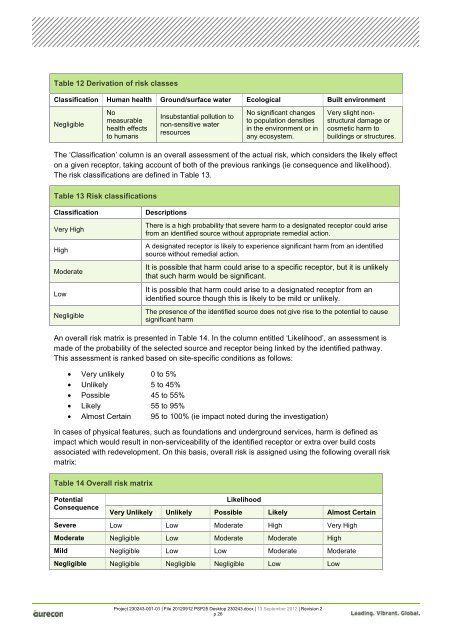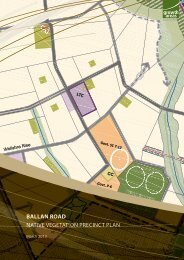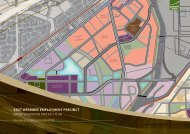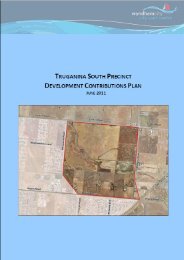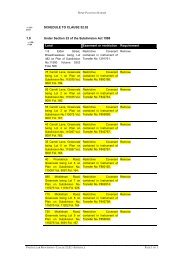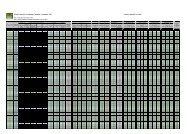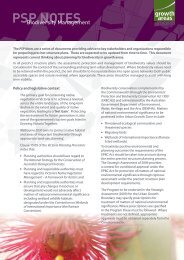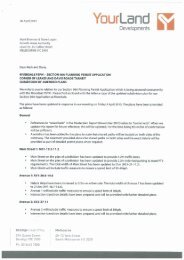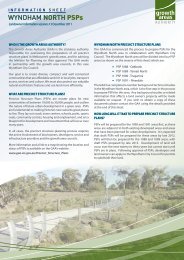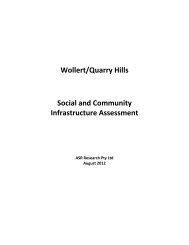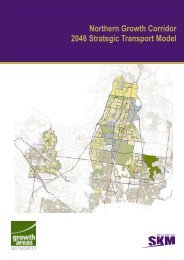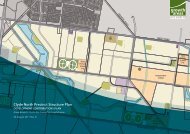Desktop Environmental, Hydrological and Geotechnical Study
Desktop Environmental, Hydrological and Geotechnical Study
Desktop Environmental, Hydrological and Geotechnical Study
Create successful ePaper yourself
Turn your PDF publications into a flip-book with our unique Google optimized e-Paper software.
Table 12 Derivation of risk classes<br />
Classification Human health Ground/surface water Ecological Built environment<br />
Negligible<br />
No<br />
measurable<br />
health effects<br />
to humans<br />
Insubstantial pollution to<br />
non-sensitive water<br />
resources<br />
No significant changes<br />
to population densities<br />
in the environment or in<br />
any ecosystem.<br />
Project 230243-001-01 | File 20120912 PSP25 <strong>Desktop</strong> 230243.docx | 13 September 2012 | Revision 2<br />
p 26<br />
Very slight nonstructural<br />
damage or<br />
cosmetic harm to<br />
buildings or structures.<br />
The ‘Classification’ column is an overall assessment of the actual risk, which considers the likely effect<br />
on a given receptor, taking account of both of the previous rankings (ie consequence <strong>and</strong> likelihood).<br />
The risk classifications are defined in Table 13.<br />
Table 13 Risk classifications<br />
Classification Descriptions<br />
Very High<br />
High<br />
Moderate<br />
Low<br />
Negligible<br />
There is a high probability that severe harm to a designated receptor could arise<br />
from an identified source without appropriate remedial action.<br />
A designated receptor is likely to experience significant harm from an identified<br />
source without remedial action.<br />
It is possible that harm could arise to a specific receptor, but it is unlikely<br />
that such harm would be significant.<br />
It is possible that harm could arise to a designated receptor from an<br />
identified source though this is likely to be mild or unlikely.<br />
The presence of the identified source does not give rise to the potential to cause<br />
significant harm<br />
An overall risk matrix is presented in Table 14. In the column entitled ‘Likelihood’, an assessment is<br />
made of the probability of the selected source <strong>and</strong> receptor being linked by the identified pathway.<br />
This assessment is ranked based on site-specific conditions as follows:<br />
• Very unlikely 0 to 5%<br />
• Unlikely 5 to 45%<br />
• Possible 45 to 55%<br />
• Likely 55 to 95%<br />
• Almost Certain 95 to 100% (ie impact noted during the investigation)<br />
In cases of physical features, such as foundations <strong>and</strong> underground services, harm is defined as<br />
impact which would result in non-serviceability of the identified receptor or extra over build costs<br />
associated with redevelopment. On this basis, overall risk is assigned using the following overall risk<br />
matrix:<br />
Table 14 Overall risk matrix<br />
Potential<br />
Consequence<br />
Likelihood<br />
Very Unlikely Unlikely Possible Likely Almost Certain<br />
Severe Low Low Moderate High Very High<br />
Moderate Negligible Low Moderate Moderate High<br />
Mild Negligible Low Low Moderate Moderate<br />
Negligible Negligible Negligible Negligible Low Low


